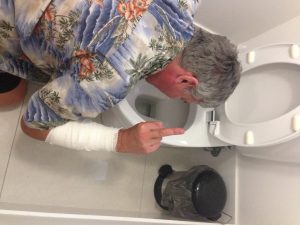US: FDA takes steps to build a stronger workforce
Scott Gottlieb
https://blogs.fda.gov/fdavoice/index.php/2017/11/fda-takes-steps-to-build-a-stronger-workforce/
 I’m a Canadian, U.S. and Australian citizen (and maybe UK too), my scientific c.v. doesn’t suck, so I’ll work anywhere (and I’m cute with puppies, 15 years ago).
I’m a Canadian, U.S. and Australian citizen (and maybe UK too), my scientific c.v. doesn’t suck, so I’ll work anywhere (and I’m cute with puppies, 15 years ago).
FDA faces challenges related to building and maintaining a diverse, talented, and dedicated professional workforce. The agency’s responsibilities increasingly demand a staff with specialized skills; and our own process sometimes doesn’t fully support our ability to recruit and retain the people we need. Congress has given FDA new resources and authorities to build and maintain our talented workforce. But the agency still needs to do more to expand on these opportunities and solidify our workforce.
A few months ago, I announced that FDA is taking action to build a stronger workforce by making key process improvements related to hiring and retention. Our people are the agency’s most important asset. We need to invest in our approach to how we hire and retain our staff.
To achieve this goal, we’ve established an FDA Hiring Initiative to reimagine the agency’s hiring practices and procedures with the goal of attracting, recruiting, hiring and retaining professionals who will support FDA’s mission. As part of that initiative, I requested a comprehensive evaluation of our hiring practices and procedures.
Today, FDA is releasing the Initial Assessment of FDA Hiring and Retentionreport. This comprehensive survey identifies the root causes of our current challenges and provides a roadmap for our future.
Building and retaining talented staff is critical to FDA’s ability to meet our public health mission. We’re launching a comprehensive effort to streamline our hiring practices with a focus on recruiting and retaining a world-class workforce. As a first step, FDA will hold a public meeting later this month to share the results of the report, our thinking for overhauling the hiring process, and to solicit public comment.
We’ll also be getting feedback from FDA staff since our people have the best perspective on the challenges they see recruiting the best and brightest people, and keeping them at FDA.
We also intend to conduct a hiring pilot early next year that will leverage the key findings from the initial assessment and that will modernize and streamline hiring practices by using new IT tools and eliminating unnecessary processes. The pilot will focus on the end to end hiring process beginning with the day the need for new staff is identified to the day a candidate is hired. It will directly align our administrative hiring procedures with the scientific objectives of our programs. The new, more efficient approach in the pilot will focus on hiring several critical occupations in the medical product areas to support commitments of the Prescription Drug User Fee Act (PDUFA) VI and the Biosimilar User Fee Act (BsUFA) II.
As part of the initiative, we’ve established a Scientific Staffing team that will focus on recruiting scientists and conducting proactive outreach to professional associations and academia. Our scientific recruitment team will develop digital and social media tools, which will provide FDA with modern recruitment and outreach techniques. These efforts, combined with the successes of the hiring pilot, will yield a future state of efficient, consistent, processes that helps us get the right people in the right roles to achieve results.
The soul of FDA and our public health mission is our people. Retaining the people who help us achieve our successes is as important as recruiting new colleagues to help us meet our future challenges.










